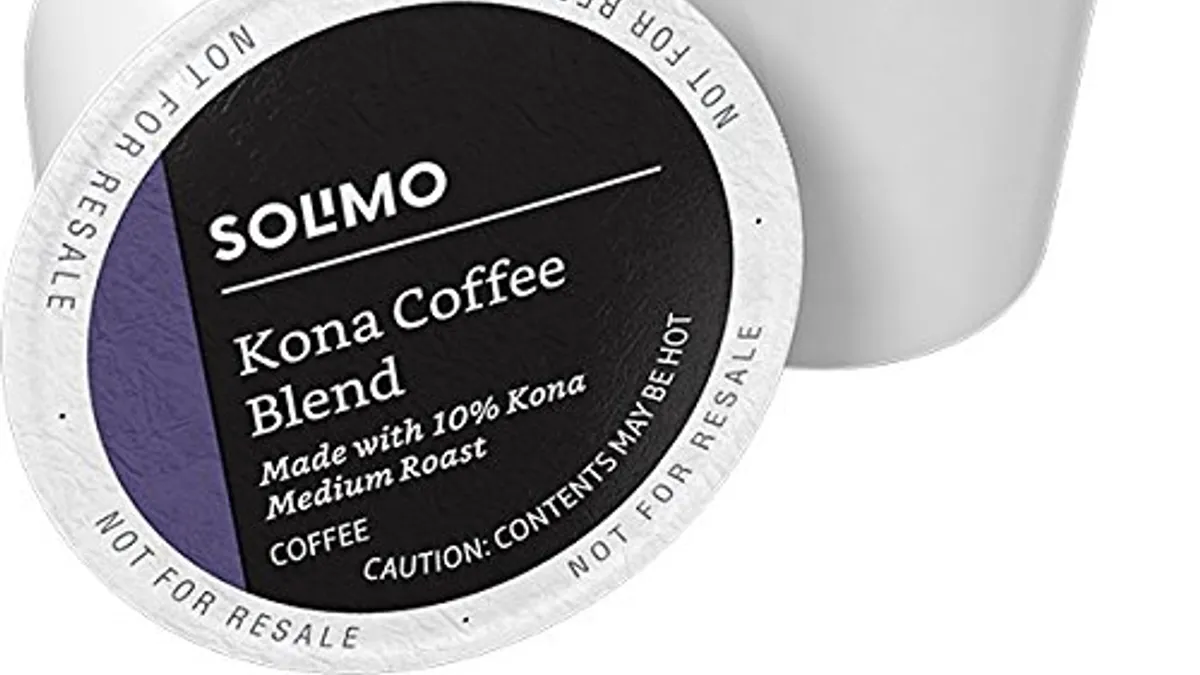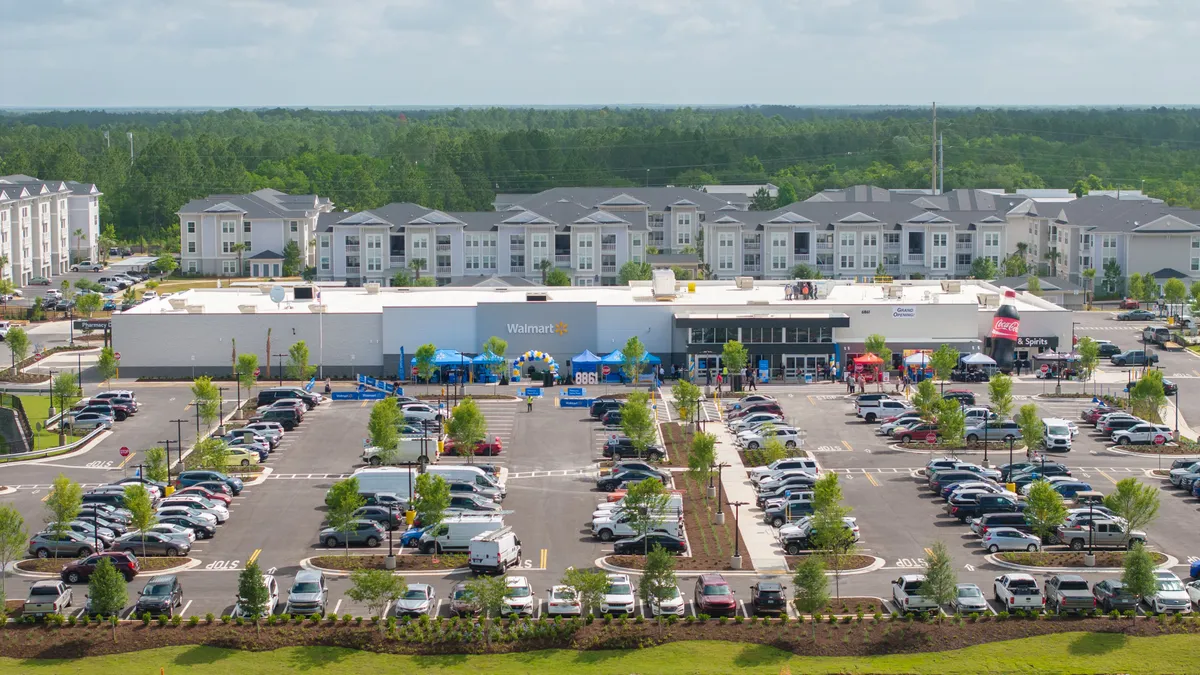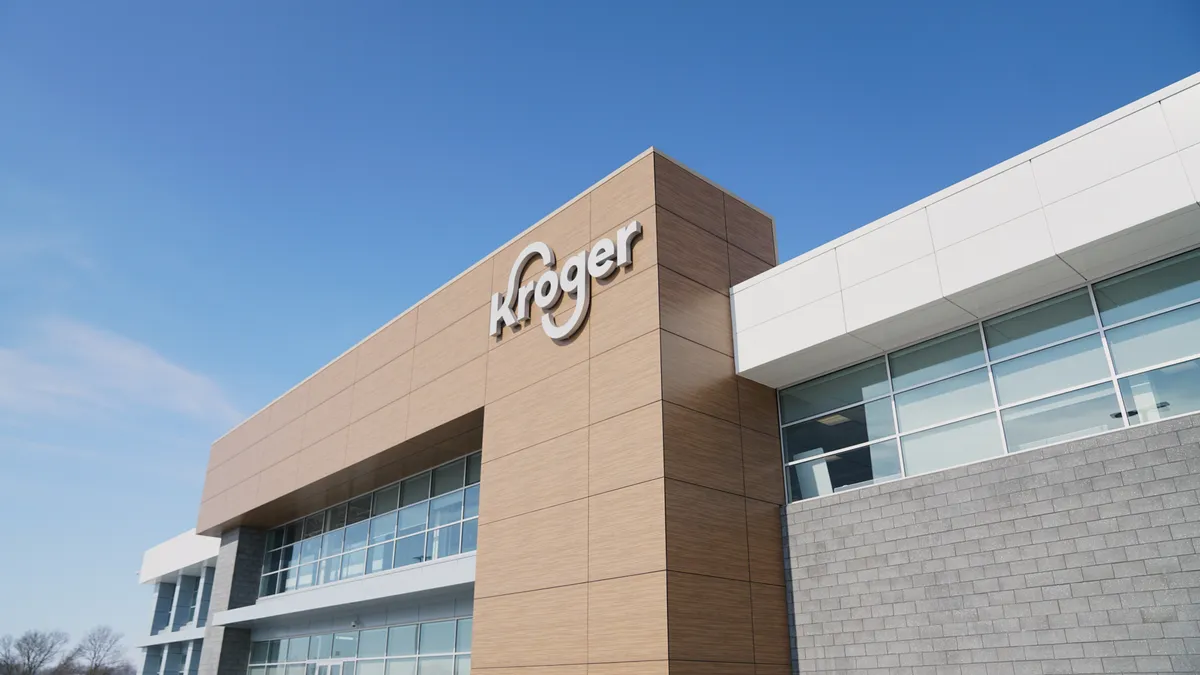Dive Brief:
- Amazon’s store brand grocery sales are performing well in some areas but faltering in others, according to a second-quarter sales report from One Click Retail. Coffee pods released under its new Solimo brand have been a hit, quickly breaking into the top 25 sales for the category and generating $60,000 in revenue per week. However, its Happy Belly line fell from the number 5 snack brand a year ago to number 16.
- Coffee, cold drinks and snacks remain the top-selling categories on Amazon.com, the report notes, accounting for more than $350 million in sales during this year’s second quarter. The three top-selling grocery items on the site are Original Donut Shop 72-count coffee pods, 12-packs of Soylent meal replacement shakes and 100-count packs of McCafé Premium Roast coffee pods.
- Amazon accounts for 18% of all online grocery sales — double the share of its nearest competitor — according to One Click Retail.
Dive Insight:
Despite having big ambitions in grocery, Amazon has a very small private label footprint in food and beverage. So to have a main brand like Happy Belly struggling is not a good sign, and could indicate a weakness for other retailers to exploit.
As Coresight Research points out, just 2% of Amazon’s private label offerings are in food and beverage. These comprise brands of items ranging from snack foods to frozen meals and a line of premium fresh meat. Compared to grocers like Kroger and Albertsons, which have hundreds of store brands and see upwards of a quarter of their volume and dollar sales in the channel, it’s clear the e-tailer lags in an increasingly important segment of the food business.
Amazon has other advantages, of course. But retailers are finding that store brands offer an opportunity to shore up loyalty, making it harder to pry them away for key purchases. Fifty-three percent of shoppers use store brands to determine where they shop now, versus 34% in 2011, according to sales and marketing company Acosta. Grocers see private label as a defensive maneuver against Amazon’s growth.
Whole Foods has pumped up Amazon’s grocery presence, with Prime membership deals and price cuts driving traffic to stores. And the grocer’s 365 Everyday brand is the top private label grocery line on the e-tailer’s website. As Whole Foods continues to develop new own brand offerings, they are likely to drive customers to stores and to Amazon’s site.
Still, Amazon needs to build its own grocery offerings beyond Whole Foods in order to be successful, and there are many problem spots. Growth of its Pantry service is flat, according to One Click Retail. Amazon recently converted Pantry into a subscription service, which could help boost sales from core customers — Amazon’s subscription-based revenue rose 50% in the fourth quarter of last year, Bloomberg reported — but it seems unlikely to expand its overall appeal. Meanwhile, AmazonFresh, the company’s grocery delivery service, has struggled to grow since its launch more than a decade ago.
Amazon sells a lot of beverages and snacks, but it’s not yet a destination for the truly profitable full-basket grocery shop. Building those larger orders through its online channels and Whole Foods stores is a priority for the company, but it faces some stiff competition along the way.
The company’s main challenger for full-basket trips is Walmart, which offers store pickup from hundreds of stores nationwide and plans to bring home delivery to 100 markets by year’s end. According to Coresight, nearly 22% of Walmart’s online shoppers said they purchased “most” or “all or almost all” of their groceries from the retailer, compared to just 12% of Amazon shoppers who said the same.
The e-tailer may be an online convenience store for most shoppers right now, but don’t expect that to last for long, given its Whole Foods assets.









